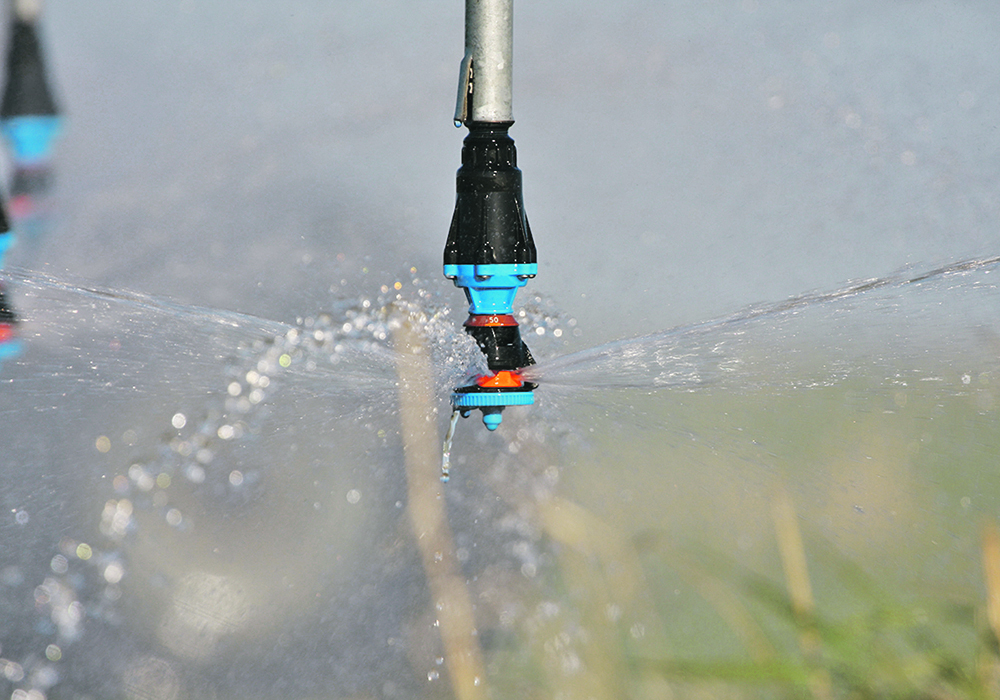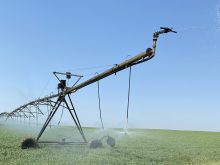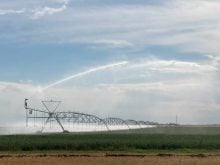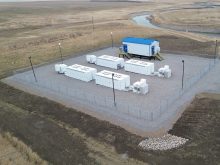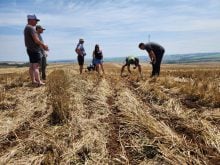The policy and research organizations that represent Saskatchewan irrigators are finally, officially, moving toward amalgamation.
After years of discussion, the memberships of the Saskatchewan Irrigation Projects Association and the Irrigation Crop Diversification Centre voted at their annual meetings earlier this month in favour of board recommendations to proceed.
Last year the boards formed a joint working group, which developed a vision of the new organization, to be known as Irrigation Saskatchewan, as well as a logo.
Read Also

August rain welcome, but offered limited relief
Increased precipitation in August aids farmers prior to harvest in southern prairies of Canada.
Members voted to incorporate the shared logo, move forward with amalgamation and develop a steering committee. It is still expected to take two or three years before the merger will be complete.
“This is going to be a process,” said ICDC chair Jeff Ewen, adding it will require professional help to sort out.
He pointed to the mergers of crop organizations in both Saskatchewan and Alberta as examples of how to become more efficient and stronger overall.
“We overlap so much. We complement so much,” added SIPA chair Aaron Gray. “We’re at every crop show together. We might as well be together.”
He said members could be confident the process will unfold properly to do what’s right for them.
“We’ve got a lot of new ideas and the thinking is to bring that together and be one united voice and hope to be able to solve all producer issues, whether that’s agronomic or policy or whatever,” said Ewen.
As well, a merger could reduce the demands on already-busy farmers.
“We were running two full boards of irrigators,” Ewen said. “In reality, we’re still a small group in the province so we’re pulling from a really small pool of directors.”
The 2022 conference was the largest in 27 years, organizers said.
Gerry Gross, who sat on the ICDC board last year but in the 1980s was a civil servant working in irrigation, said the sector has come a long way.
“The energy that’s in the room is kind of a testament to what ICDC and SIPA can do together,” he said. He saw a lot of youth in the room and within ministry staff and said irrigation is in good hands.
And, he noted that industry support, visible in the trade show and through sponsorship, was positive.
“There was a time you’d be lucky to get $100,” he said.
Originally, government funded irrigation research and development. When the NDP government was elected in 1991, the Irrigation Act led to the formation of SIPA to lobby for the industry and ICDC to lead farmer-directed research.
Mandatory levies were introduced for ICDC, but not for SIPA. Both organizations do operate on levies and some government funding. ICDC also obtains research grants from institutions and producer associations.
Last year, SIPA obtained provincial funding to hire an executive director.
Gross said this has been good for the organization and the sector. But he warned, “we are still way too dependent on governments and this has to change.”
Former ICDC chair Anthony Eliason had concerns about the potential amalgamation.
“I’ve been looking at this for four years and I don’t know what’s changed this year,” he said. “It’s never made sense financially to join.”
He said while ICDC has the stability of levy funding, SIPA is essentially living on memberships and government money and he wondered how an executive director could be paid without the latter.
Executive director Jillian Brown said part of her job is to develop new funding to pay her salary.
Joel Vanderschaaf, who was once SIPA chair, said he assumed the new organization would fall under the Irrigation Act and therefore the levy system. Folding SIPA’s voluntary levy into the mandatory ICDC levy would help, he said.
“There are pathways, I think sustainable pathways, for us to become one organization and not only be financial sustainable but actually unleash some efficiencies,” he said.
Agriculture minister David Marit announced during the conference that through the Water Security Agency, the government has allocated water for 15,000 new acres of irrigation from the Saskatoon South East Water Supply System, also known as the SSEWS canal.
“We’re starting to see this growth within the existing system and I think that’s the part we’re really trying to key on,” Marit said in an interview.
He said there is interest among young producers and outside of irrigation districts, including in the southeast and southwest.
“Every 5,000 and 10,000 acres, if we did that every year for the next 10 years, all of a sudden you’ve got another 100,000 acres under pivot,” he said.
David Cooper, vice-president of economic development and agriculture services at WSA, said the goal of 8,500 new irrigated acres annually is being surpassed.
“This year my understanding is we’re going to hit 15,000 acres so that’s a new record for us and that breaks the record we set last year,” he said.
The large expansion project at Lake Diefenbaker, which would add 500,000 acres, is still in the design stage and could take another 10 years or more to complete.
Contact karen.briere@producer.com


